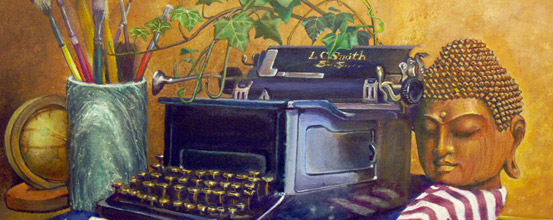Peter Gabriel at Continental Airlines Arena

Peter Gabriel and his vast entourage of musicians and technicians touched down November 17 in East Rutherford as the “Growing Up” tour in support of his latest album, “Up”. Co-founder and former member of the 70s art-rock band, “Genesis,” Gabriel in the early 80s swung his attention and creative energy into what is now referred to as “world music,” a term which owes its popularity to him. In 1982 he founded the WOMAD (World of Music Arts and Dance) Festival and in 1989, Real World Records, single-mindedly pursuing the goal of exposing— and being exposed to— ethnic (mainly African) music, seeing this as among other things, a means of combating racism.
The much celebrated CD “Up” contains ten tracks of characteristic Gabriel songs: new, but in his familiar style of combining emotional vocals, warm melodies, indigenous instruments and Africanized rhythms. The set performed during the show was drawn mainly from the new album, but featured many of his older favorites including “Red Rain,” “Sledgehammer,” “In Your Eyes,” and “Snapshot.”
The visuals—the so-called “light show”—went beyond the merely spectacular into the realm of mind-boggling. Gabriel pranced, jogged, even bicycled on a circular, revolving stage along with his accompanists: guitarist, bassist, keyboardist, drummer and native-costumed dancers, vocalists and performers on ethnic instruments. Gospel singers, The Blind Boys of Alabama, opened with vocal virtuosity that seemed almost beyond the range of the human voice, and were called back to sing along with Gabriel during the main set.
A huge, saucer-like construction resembling a space station dangled over the stage, from time to time lowering itself or various bizarre props onto the performance platform below. Down came a monstrous, egg-like balloon, which was illuminated with patterns of clouds. The egg opened, hatching a huge ball that glowed now like a moon, now a flaming sun. Subsequently the ball was stripped of its casing to reveal a clear plastic, many-celled globe large enough for Gabriel to enter and once inside to march like a giant hamster in a crystalline exercise sphere, rolling around the stage while singing.
After two hours of energetic performance, Gabriel provided his adoring audience of 30 – 50 year-old fans two sets of mellowed-out encores that brought satisfied looks to their faces and, for some, tears to their eyes.




 The Fuse Gallery in Manhattan’s East Village’s is fast distinguishing itself as the premier location for exhibiting the works of nationally-famous artists in the pop-punk, cutting-edge category, the stuff that appeals to the metropolitan rock-music crowd. The opening reception for renowned montage artist Winston Smith was held October 26 in the gallery which, like the Lit Lounge to which it is connected, is just a few steps below street level at 93 2nd Avenue. Both outfits—the lounge and the gallery—are run by gracious and friendly hosts, Michael McGrane and Max Brennan.
The Fuse Gallery in Manhattan’s East Village’s is fast distinguishing itself as the premier location for exhibiting the works of nationally-famous artists in the pop-punk, cutting-edge category, the stuff that appeals to the metropolitan rock-music crowd. The opening reception for renowned montage artist Winston Smith was held October 26 in the gallery which, like the Lit Lounge to which it is connected, is just a few steps below street level at 93 2nd Avenue. Both outfits—the lounge and the gallery—are run by gracious and friendly hosts, Michael McGrane and Max Brennan.
 The original acrylic on canvas was completed in 1992 and was sold to the Ralph and Dorothy Venezia Family in 1997. A 16″ X 20″ C-print was photographed to make this image. The tattoo on his right arm is purely made-up. I placed it on his arm as a tribute to one of my favorite writers and art-critics, Professor Camille Paglia whose attitudes and writings swing between high-cultural and low-cultural extremes.
The original acrylic on canvas was completed in 1992 and was sold to the Ralph and Dorothy Venezia Family in 1997. A 16″ X 20″ C-print was photographed to make this image. The tattoo on his right arm is purely made-up. I placed it on his arm as a tribute to one of my favorite writers and art-critics, Professor Camille Paglia whose attitudes and writings swing between high-cultural and low-cultural extremes.
